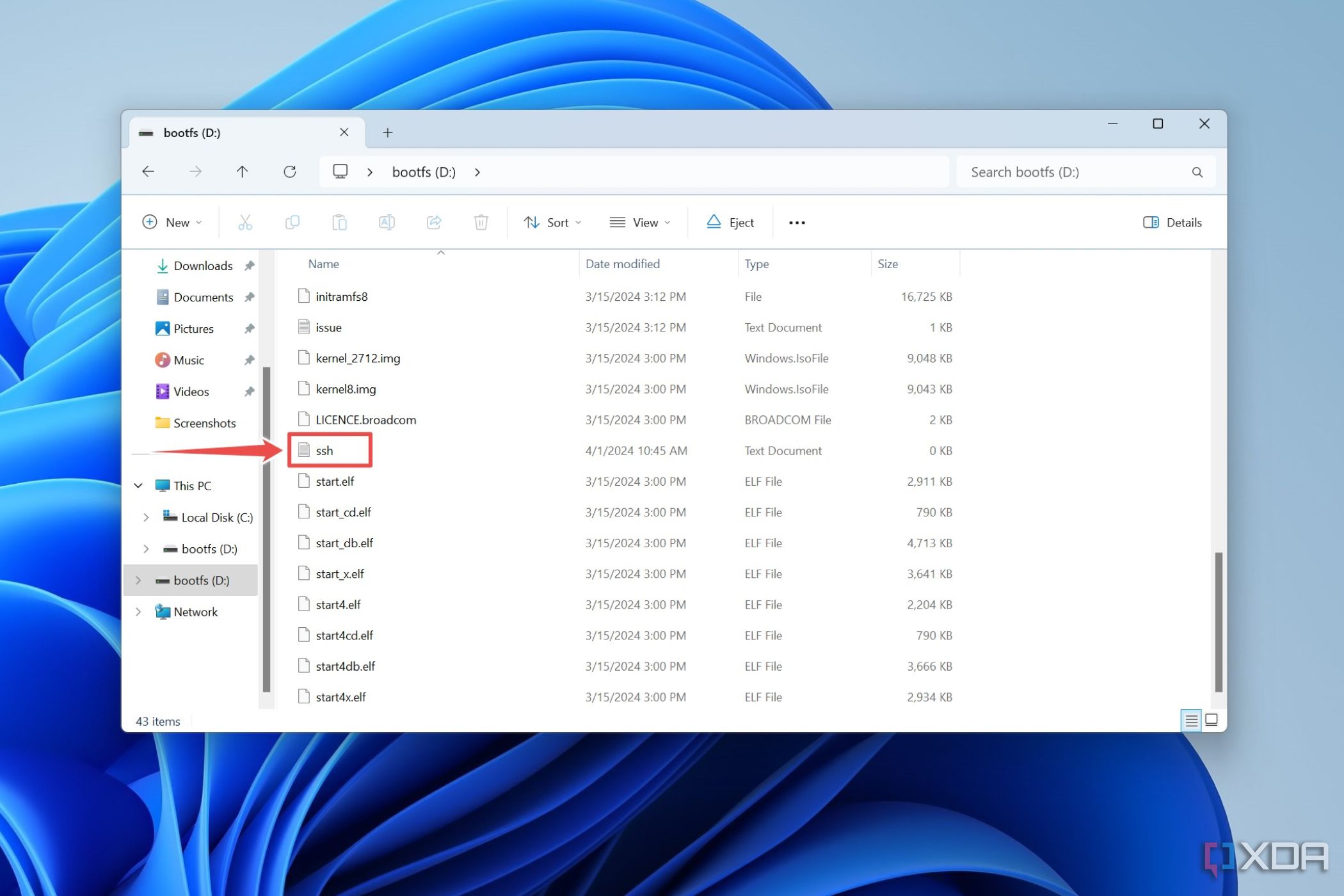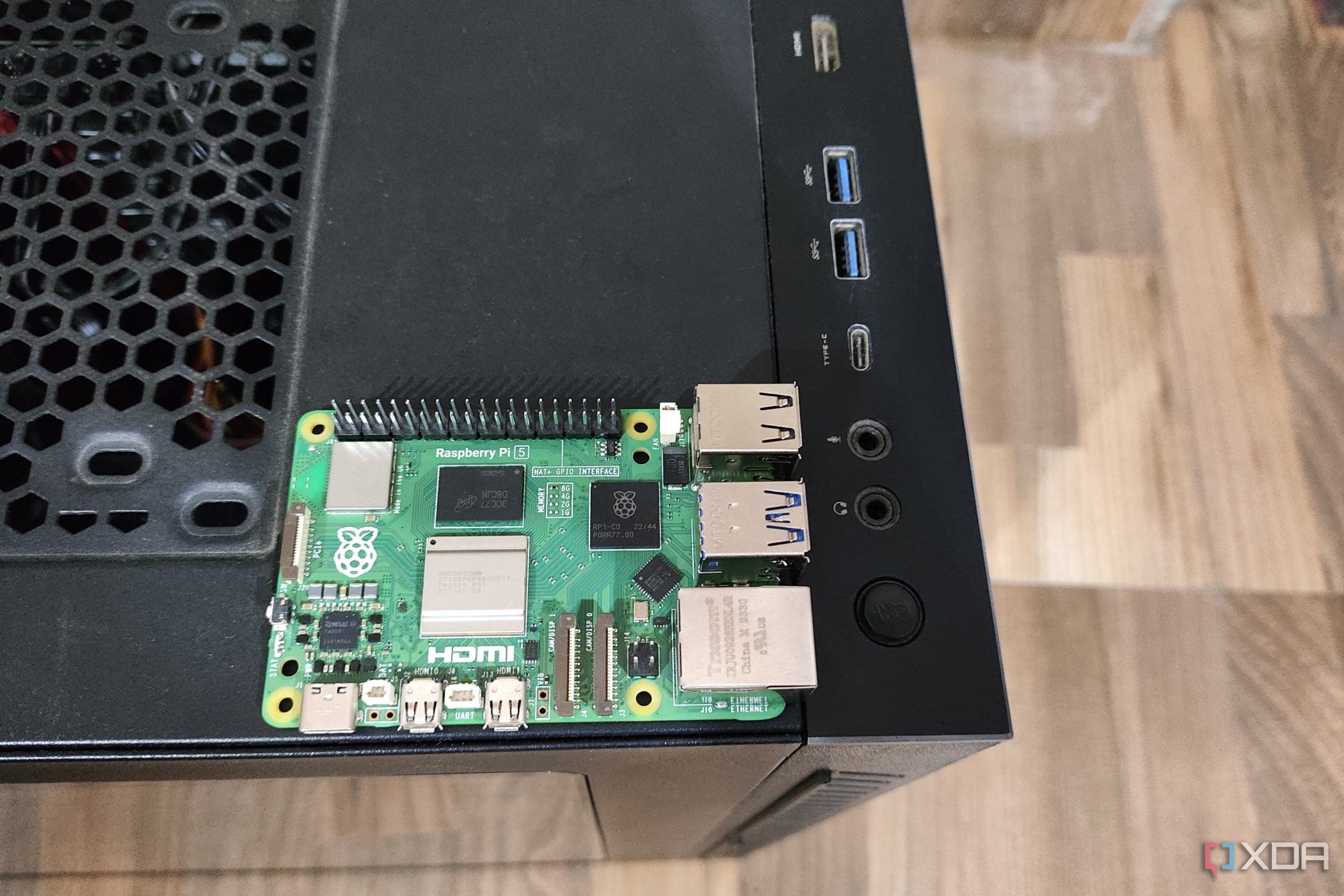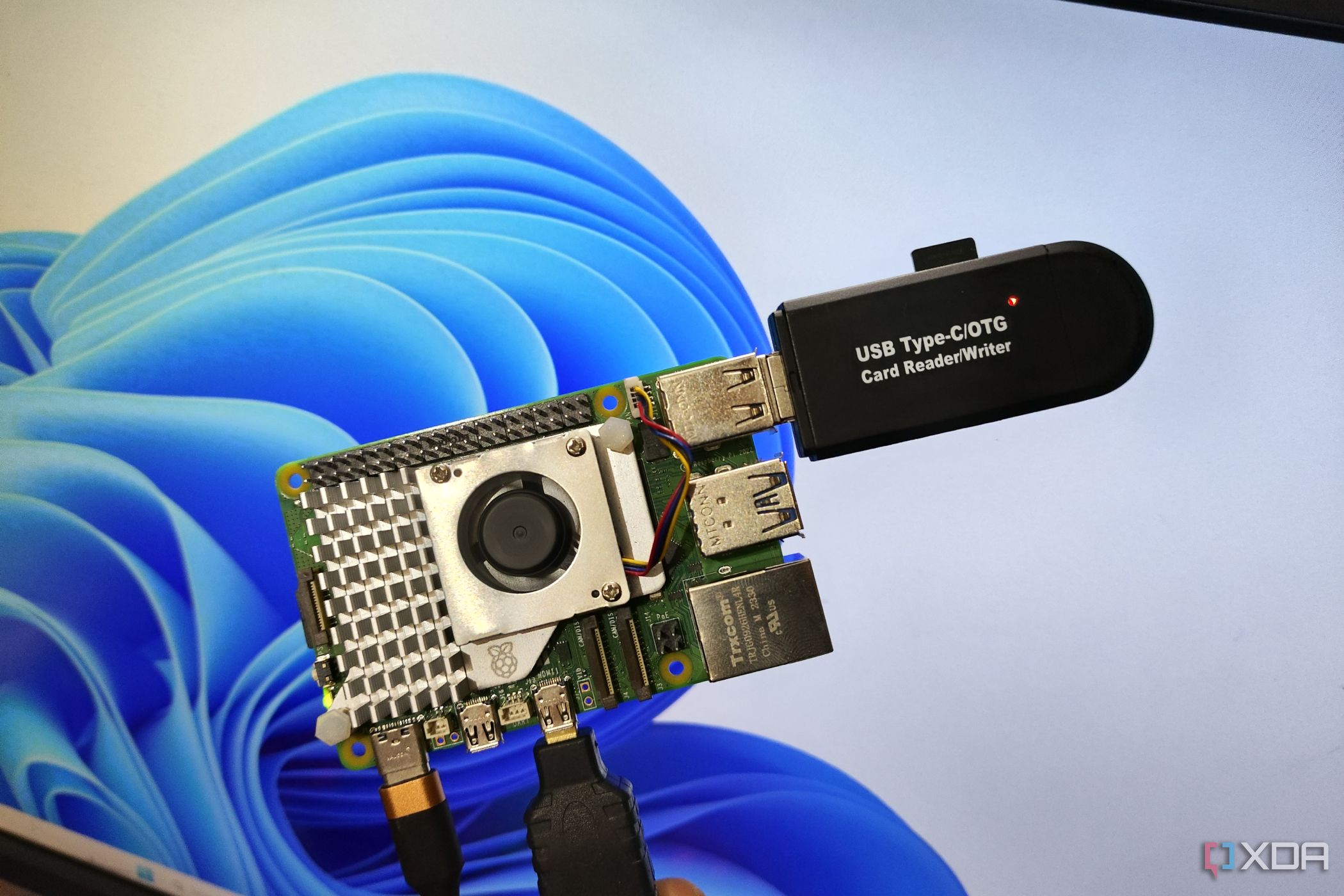Unlock SSH: How To Access Raspberry Pi Securely
So, you've got a Raspberry Pi, a tiny marvel of computing power, sitting there humming with potential. But how do you actually get in? The key to unlocking your Raspberry Pi's capabilities, and truly making it your own, lies in the ability to remotely access it via SSH Secure Shell. This is more than just a convenience; it's the gateway to a world of customization, control, and limitless possibilities. Failing to master this fundamental technique means you're only scratching the surface of what your Raspberry Pi can do.
SSH allows you to interact with your Raspberry Pi from another computer, be it a laptop, desktop, or even a smartphone. Think of it as a secure, encrypted tunnel through which you can send commands, transfer files, and administer your Pi without needing a physical keyboard, mouse, or monitor directly connected to it. This remote access is invaluable for a plethora of projects, from headless servers tucked away in a closet to IoT devices deployed in remote locations. Understanding how to access your Raspberry Pi via SSH is the cornerstone of almost every significant project you might undertake. It's the first step, and often, the most important.
Troubleshooting SSH Access to Your Raspberry Pi
Encountering difficulties connecting via SSH? Don't despair. Troubleshooting is a common part of the process, and several factors can contribute to connection failures. The following are common causes and solutions.
- Network Connectivity: Ensure your Raspberry Pi and the computer you're trying to connect from are on the same network. This might seem obvious, but it's a frequent culprit. Double-check that both devices are connected to your Wi-Fi router or wired network, and that the network itself is functioning correctly. You can try pinging your Raspberry Pi's IP address from your other computer to test basic network connectivity.
- IP Address Accuracy: You need to know your Raspberry Pi's IP address to connect via SSH. This can be found in several ways. If you have a monitor and keyboard connected to your Pi, you can use the `ifconfig` command in the terminal. You can also check your router's administration interface to see a list of connected devices and their IP addresses. Alternatively, if you have a headless setup, you can use a network scanner on your other computer to discover the Pi's IP. Make absolutely certain you're using the correct IP address.
- SSH Server Enabled: By default, SSH is disabled on many Raspberry Pi OS installations. You'll need to enable it. This can be done through the Raspberry Pi Imager when flashing the SD card or, if you already have a working Raspberry Pi setup with a monitor and keyboard, by using the `sudo raspi-config` command in the terminal, and navigating to "Interface Options" then enabling SSH.
- Firewall Restrictions: Firewalls, whether on your computer or your router, can block SSH connections. Check your computer's firewall settings and ensure that port 22 (the default SSH port) is open for incoming connections. You may also need to configure your router's firewall to allow SSH traffic from your local network.
- Incorrect Credentials: Make sure you're using the correct username and password. The default username is typically `pi`, and the default password is `raspberry`. It's highly recommended to change the default password for security reasons as soon as you set up SSH. Incorrect credentials are the most common reason SSH connections fail after the initial setup.
- Port Forwarding (for remote access): If you're trying to access your Raspberry Pi from outside your local network (e.g., from your work or a coffee shop), you'll need to set up port forwarding on your router. This involves telling your router to forward incoming traffic on port 22 to the internal IP address of your Raspberry Pi. Be extremely careful with this, as it can make your Raspberry Pi more vulnerable to security threats if not configured correctly. Consider using a VPN (Virtual Private Network) for a more secure remote access solution.
- SSH Client Issues: The SSH client on your computer might be misconfigured or have problems. Try a different SSH client (e.g., PuTTY on Windows, or the built-in `ssh` command in Linux/macOS). Ensure the client is configured to connect to the correct IP address, port (22 by default), and username.
- SD Card Corruption: A corrupted SD card can cause numerous problems, including SSH connection failures. If you've tried everything else, consider reflashing the Raspberry Pi OS onto a new SD card.
How to Enable SSH on Your Raspberry Pi
The method for enabling SSH depends on how your Raspberry Pi OS is set up.
Method 1
This is the simplest and most secure way to enable SSH before you even boot up your Raspberry Pi for the first time.
- Download and Install Raspberry Pi Imager: Download and install the Raspberry Pi Imager from the official Raspberry Pi website. This is the official and recommended tool for flashing Raspberry Pi OS onto an SD card.
- Select the Operating System: Open the Imager and click on "Choose OS." Select the operating system you want to use. The recommended option is "Raspberry Pi OS (32-bit)" or "Raspberry Pi OS (64-bit)".
- Select the SD Card: Click "Choose SD Card" and select the SD card you want to use.
- Advanced Options: Before flashing the image, click on the "Settings" (gear icon) button.
- Enable SSH: In the settings, check the box for "Enable SSH." You can choose to set a password or use key-based authentication. If you set a password, make it strong and unique. If you choose to authenticate with a key, make sure you understand key generation and management principles.
- Configure Wi-Fi (Optional): You can also configure your Wi-Fi settings in the advanced options, so your Raspberry Pi will connect to your network automatically on first boot.
- Write the Image: Click "Write" to flash the image onto your SD card. The Imager will write the operating system to the SD card, and enable SSH according to your settings.
- Insert and Boot: Once the writing is complete, insert the SD card into your Raspberry Pi and boot it up. You should now be able to access it via SSH without needing a keyboard, mouse or monitor.
Method 2
If you already have your Raspberry Pi OS installed and accessible via a monitor, keyboard, and mouse, you can enable SSH using the `raspi-config` utility.
- Open the Terminal: Boot up your Raspberry Pi and open a terminal window.
- Run `raspi-config`: Type `sudo raspi-config` and press Enter. You may be prompted for your password.
- Navigate to Interface Options: Use the arrow keys to navigate the menu. Select "Interface Options" and press Enter.
- Enable SSH: Select "SSH" and press Enter. Choose to enable SSH.
- Finish and Reboot: You will be prompted to finish and reboot your Raspberry Pi. Choose yes. Once it reboots, SSH should be enabled.
Connecting to Your Raspberry Pi via SSH
Once SSH is enabled, connecting to your Raspberry Pi from another computer is a relatively straightforward process.
Using the Command Line (Linux and macOS)
The simplest way to connect is using the built-in SSH command in your terminal.
- Open a Terminal: Open the terminal application on your Linux or macOS computer.
- Use the `ssh` command: Type the following command, replacing `pi` with your username and `192.168.1.100` with your Raspberry Pi's IP address (replace with your Pi's actual IP):
ssh pi@192.168.1.100 - Enter Your Password: You will be prompted for your password. Type your password and press Enter. Note that the characters you type will not be displayed in the terminal for security reasons.
- Successful Connection: If you enter the correct password, you will be logged into your Raspberry Pi's terminal. You can now execute commands on your Raspberry Pi remotely.
Using PuTTY (Windows)
PuTTY is a popular, free SSH client for Windows.
- Download and Install PuTTY: Download PuTTY from a reputable source (e.g., the official website) and install it.
- Open PuTTY: Open the PuTTY application.
- Enter Your Raspberry Pi's IP Address: In the "Host Name (or IP address)" field, enter your Raspberry Pi's IP address.
- Ensure Port is Correct: Make sure the "Port" field is set to 22.
- Select Connection Type: Ensure the "Connection type" is set to "SSH."
- Click "Open": Click the "Open" button.
- Enter Your Username and Password: A terminal window will open. Enter your username (`pi` by default) and password when prompted.
- Successful Connection: You will be logged into your Raspberry Pi's terminal.
Basic SSH Commands and Tips
Once you're connected via SSH, you can use a variety of commands to manage your Raspberry Pi. Here are some essential ones.
- `sudo`: This is the "super user do" command. Use it to execute commands with administrator privileges. For example: `sudo apt update`.
- `apt update`: Updates the package lists. This is the first step before installing or upgrading any software.
- `apt upgrade`: Upgrades all installed packages to their latest versions. A good practice to keep your system secure and up-to-date.
- `apt install [package_name]`: Installs a software package. For example: `sudo apt install apache2` will install the Apache web server.
- `apt remove [package_name]`: Removes a software package.
- `ls`: Lists the files and directories in the current directory.
- `cd [directory_name]`: Changes the current directory. For example: `cd /home/pi/Documents`.
- `pwd`: Prints the current working directory. Useful for knowing where you are in the file system.
- `mkdir [directory_name]`: Creates a new directory.
- `rmdir [directory_name]`: Removes an empty directory.
- `rm [file_name]`: Removes a file. Use with caution; there's no recycle bin!
- `nano [file_name]` or `vim [file_name]`: Opens a text editor for editing files. `nano` is simpler to use; `vim` is more powerful, but has a steeper learning curve.
- `scp [source_file] [username]@[ip_address]:[destination_path]`: Securely copies files between your computer and the Raspberry Pi. For example: `scp myfile.txt pi@192.168.1.100:/home/pi/`.
- `shutdown -h now`: Shuts down the Raspberry Pi immediately.
- `reboot`: Reboots the Raspberry Pi.
- `exit`: Logs out of the SSH session.
Security Considerations
Securing your Raspberry Pi is crucial, especially if it's connected to the internet. Here are some essential security practices.
- Change the Default Password: This is the single most important security step you can take. The default password (`raspberry`) is a major security vulnerability.
- Keep Your System Updated: Regularly update your operating system and installed software to patch security vulnerabilities.
- Use Strong Passwords: Create strong, unique passwords for all user accounts. Consider using a password manager.
- Disable Unnecessary Services: Disable any services that you're not using. The fewer running services, the smaller the attack surface.
- Use a Firewall: Configure a firewall on your Raspberry Pi to restrict network access. `ufw` (Uncomplicated Firewall) is a good option. Install it using `sudo apt install ufw`.
- Key-Based Authentication: Use SSH key-based authentication instead of password authentication. This is much more secure, as it eliminates the risk of brute-force attacks on your password. You generate a key pair (public and private) and place the public key on your Raspberry Pi. The private key remains on your computer and is used to authenticate.
- Monitor Logs: Regularly check your system logs (usually found in `/var/log`) for suspicious activity.
- Consider a VPN: If you need to access your Raspberry Pi from outside your local network, use a VPN. A VPN encrypts your traffic and provides a more secure connection than directly exposing your Pi to the internet.
- Limit SSH Access: If possible, restrict SSH access to only specific IP addresses or networks.
- Regular Backups: Regularly back up your Raspberry Pi's data, including your operating system, configuration files, and any important data.
Advanced SSH Configuration
For users who want to delve deeper, there are several advanced SSH configuration options.
- Changing the SSH Port: The default SSH port is 22. Changing this to a non-standard port can help to reduce the number of automated attacks on your Raspberry Pi, although it's not a complete security solution. To change the port, edit the `/etc/ssh/sshd_config` file with `sudo nano /etc/ssh/sshd_config`. Find the line `#Port 22` and uncomment it (remove the `#`) and change 22 to your desired port number. Then, restart the SSH service with `sudo systemctl restart ssh`. You will also need to ensure that the new port is allowed through your firewall and/or router.
- Disabling Password Authentication (for enhanced security): After enabling SSH key-based authentication, you can disable password authentication in the `/etc/ssh/sshd_config` file. Find the line `PasswordAuthentication yes` and change it to `PasswordAuthentication no`. Restart the SSH service.
- Using SSH Key-Based Authentication: This is highly recommended. Generate an SSH key pair on your local computer using the `ssh-keygen` command. Then, copy the public key (`.pub` file) to your Raspberry Pi's `~/.ssh/authorized_keys` file using the `ssh-copy-id` command or by manually copying the key content. Ensure that the permissions on the `~/.ssh` directory are correct (700) and on the `~/.ssh/authorized_keys` file (600).
- Restricting SSH Access by User: You can control which users can access your Raspberry Pi via SSH in the `/etc/ssh/sshd_config` file. Use the `AllowUsers` directive to specify a list of permitted usernames.
- Using a Dynamic DNS Service: If your Raspberry Pi's public IP address changes (which is common with dynamic IP addresses), a dynamic DNS service can provide a fixed hostname that you can use to access your Pi. Services like DuckDNS or No-IP are popular options.
Conclusion
Mastering SSH access to your Raspberry Pi opens the door to a new level of interaction and control. By understanding the basics, implementing the security best practices, and experimenting with advanced configuration options, you can unlock the full potential of this powerful, yet small, computer.



